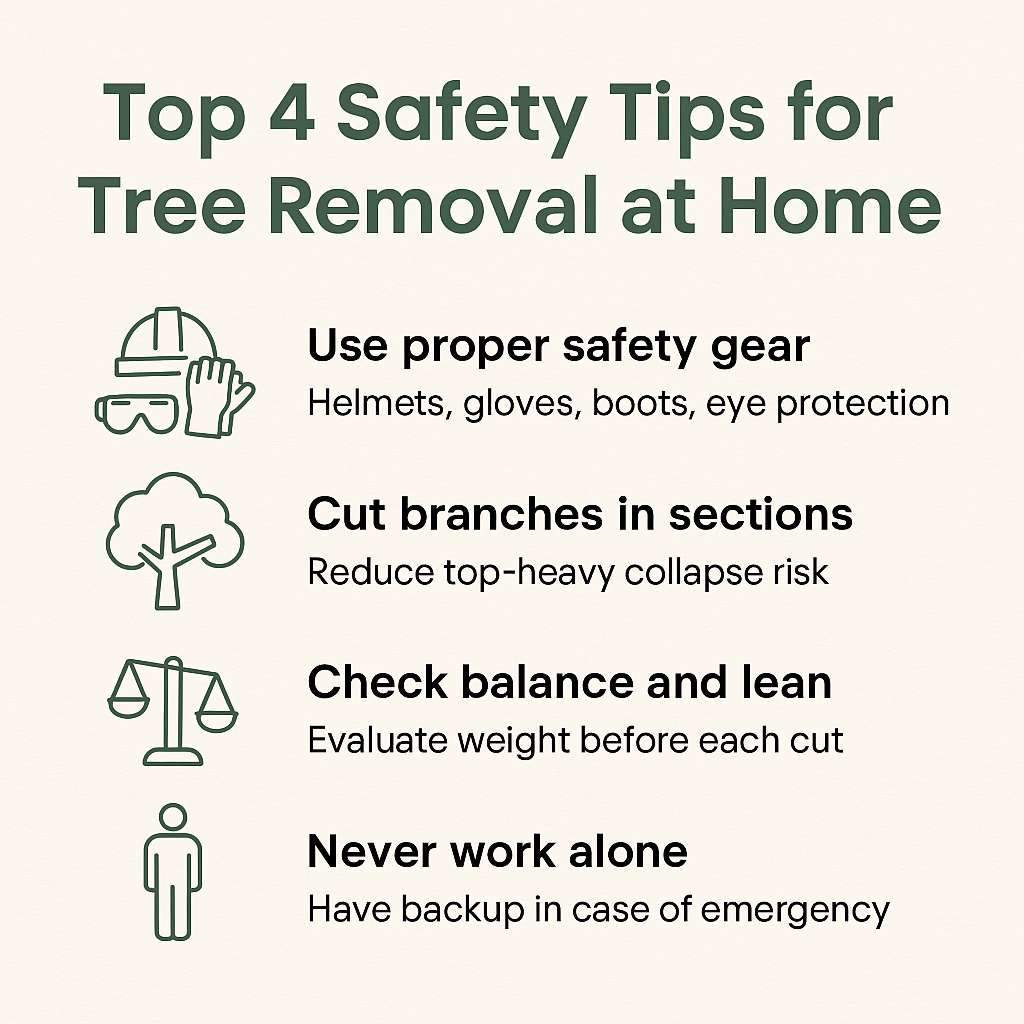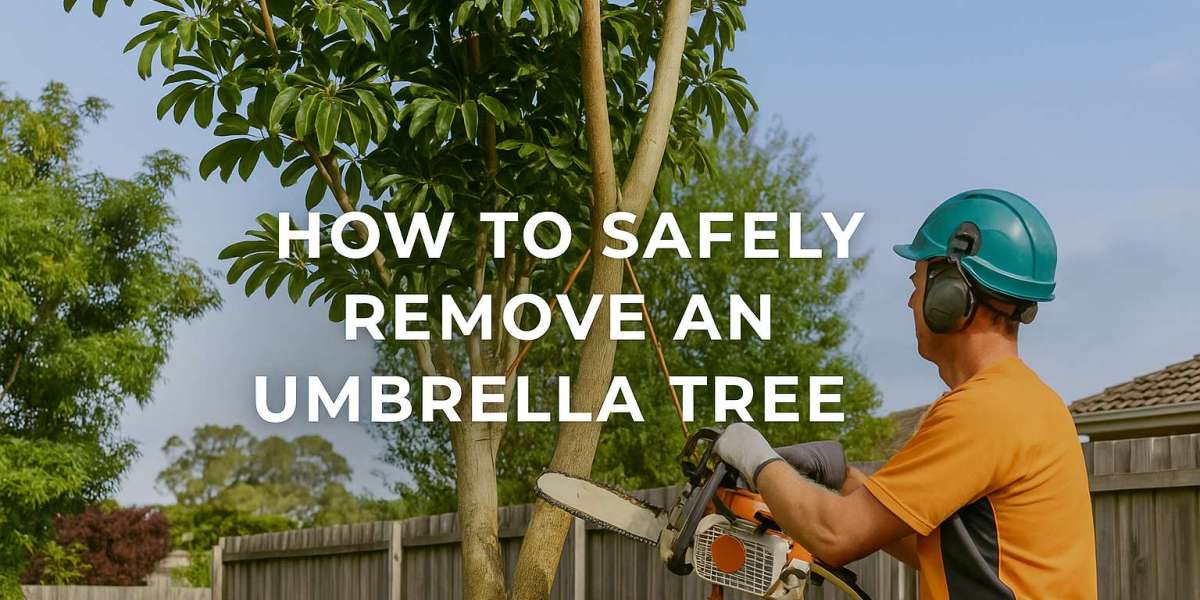Umbrella trees are known for their dramatic canopies and fast-growing nature, but they’re not always the best fit for residential landscapes. Whether it’s lifting pavers, blocking sunlight, or encroaching on plumbing, umbrella trees can quickly become more of a hazard than a feature. If you're considering removing one, it’s important to understand what you're dealing with — and how to handle the job safely and legally.
While many people try to manage it themselves, the safest route often involves working with professionals, especially when removing umbrella tree roots. Roots from these trees can extend far beyond the trunk and wreak havoc on driveways, pipes, and nearby structures. Here’s everything you need to know before getting started.
Why umbrella trees can be problematic in residential areas
Umbrella trees (Schefflera actinophylla) are often planted without a full understanding of how aggressive they can become. What starts as a small, decorative tree can eventually turn into an invasive force within your garden or yard.
Common issues include:
- Extensive root systems that can damage foundations or plumbing
- Rapid vertical growth that blocks light from gardens and solar panels
- Interference with power lines or neighbouring properties
- Attracting pests or encouraging fungal growth in damp areas
- Legal concerns in some councils regarding removal without permission
While they’re low maintenance early on, the long-term impact can be difficult and costly to manage.
Signs it’s time to remove your umbrella tree
Not every umbrella tree has to go. But there are red flags that suggest the tree is doing more harm than good.
Watch out for these:
- Roots are surfacing or disrupting hardscape (paths, retaining walls)
- Cracks are forming in pipes, paving or external drains
- Overhanging branches threaten structures during storms
- The tree is casting deep shade, impacting other plants or lawns
- Neighbours raise concerns about encroachment
When multiple issues arise, full removal is usually the best long-term solution.
Check your local council requirements first
Before you start cutting or digging, it’s essential to understand your local regulations. Many councils have guidelines for removing mature trees, even if they’re on private land.
Most areas, including Melbourne, outline their approach under urban tree management guidelines, which cover:
- Permit requirements for protected or large-species trees
- Replacement planting obligations
- Heritage or conservation overlay zones
- Penalties for unauthorised removals
- Safe distances from utility lines and drains
Even if your tree isn't heritage-listed, you may need written approval. Check your local council's website or call for clarification.
Understanding the removal process
Removing an umbrella tree is rarely a quick job. It involves strategic planning, proper tools, and knowledge of safe dismantling techniques.
Here’s how the process typically works:
- Inspection – Assess the tree’s size, health, location, and risk factors
- Permits & approvals – Verify council clearance or submit requests
- Canopy reduction – Cut back upper branches to reduce weight
- Sectional felling – Remove trunk portions in segments
- Stump grinding or excavation – Eliminate the root system
- Site cleanup – Remove debris and fill excavation areas
Many homeowners stop at the stump, but umbrella tree roots will keep growing if left untreated, potentially causing future damage.
Simulated experience: When roots cracked my stormwater pipe
A few years ago, we had what we thought was a harmless umbrella tree near our fence line. It provided good privacy and shade — until one winter, we noticed slow-draining water around the back patio. A plumber confirmed it: roots had cracked the stormwater pipe and water was pooling underground.
We called a tree specialist, and they traced the roots several metres past the trunk. Removal involved canopy dismantling, a stump grinder, and a follow-up root barrier installation. It was a two-day job, but the peace of mind was worth every cent.
Why safety matters in tree removal
Tree removal isn’t just a physical job — it’s a safety risk. Heavy limbs, unstable ladders, and chainsaws introduce potential hazards that shouldn’t be underestimated.
Key tree removal safety tips include:
- Never cut branches overhead without protective gear
- Avoid working alone on removal tasks
- Assess wind direction and canopy balance
- Use fall-arrest equipment for height access
- Ensure all equipment is serviced and appropriate for the tree sizes
Unless you’re qualified and insured, major removals should be left to certified arborists.
Dealing with deep roots and regrowth
Umbrella tree roots are persistent. Even after felling the tree, roots may continue to grow or send up new shoots if not properly removed.
Best practices include:
- Stump grinding – Pulverises the remaining trunk and upper roots
- Root excavation – Manually dig out anchor roots where possible
- Chemical treatment – Targeted applications to kill remaining root systems
- Root barriers – Installed to stop roots from re-entering problem areas
- Soil restoration – Add compost or topsoil where the ground was disrupted
Don’t just cover the area with turf or mulch and hope for the best — roots can re-emerge months later if not addressed fully.
When to call emergency services
Sometimes you can’t wait to remove a tree, especially after storms or when there’s a risk to safety. Umbrella trees with broad, heavy canopies are more vulnerable to wind damage and sudden splits.
Scenarios that call for urgent action:
- The tree is leaning or has cracked near the base
- Large limbs have fallen onto homes, vehicles, or footpaths
- Roots have been dislodged by erosion or flooding
- Electrical lines are impacted
- The council has issued a formal removal request
In cases like these, it’s worth having a go-to emergency tree removal guide bookmarked. Speed and experience are everything when safety is on the line.
Post-removal care and landscape recovery
Once the tree and roots are gone, you're left with a disrupted patch of garden or lawn — but also new possibilities.
Here’s how to restore and reuse the space:
- Fill and level the area with quality topsoil
- Let the soil settle before planting or turfing
- Use the opportunity to improve drainage or add root barriers
- Replace with native or low-maintenance trees
- Watch for signs of regrowth in the surrounding soil for 6–12 months
Treating the post-removal space as a fresh start allows you to create a more practical and visually appealing landscape.
Final thoughts: Safe removal is smart removal
Taking down an umbrella tree isn’t something you just dive into with a saw and a weekend to spare. It needs a clear plan — one that accounts for safety, council rules, and what your yard will look like afterwards. When done properly, it’s not just about removing a problem tree. It’s about protecting your home, avoiding expensive damage, and making space for something more useful (or beautiful) in the long run.
Before making any cuts, check what your local council expects, talk to someone who knows their stuff, and think about what you want that space to become. Whether you’re worried about safety, fixing structural issues, or simply reshaping your garden, doing it right the first time will save you time, money, and a lot of stress later on.



